Hi, Meat Lovers! It’s Healthy Hen JoAnna, here to help you brush up on your beef knowledge! This is an educational lesson we can get on board with, am I right?
So, let’s be real: Have you ever been to a fancy schmancy steak house and felt clueless when you looked at the various types of cuts available on the menu? Have you ever stared blankly back at a waiter when he asked you how you wanted your dinner cooked? And have you ever wanted to cook a nice steak dinner or other beef recipe you found online, but felt overwhelmed about the best way to prepare the meat? Hello, Pinterest Fail!
If you answered yes to these questions, you’re definitely not alone! But never fear, I’m here to help you become a beef connoisseur. After all, we can’t have you filling your Moink box with the best grass-fed, grass-finished beef from family farms, but then not knowing what to do with it, now can we? Read on for a primer on the cuts of beef Moink offers, how to prepare them, and some fun facts that will impress your friends at the next dinner party!
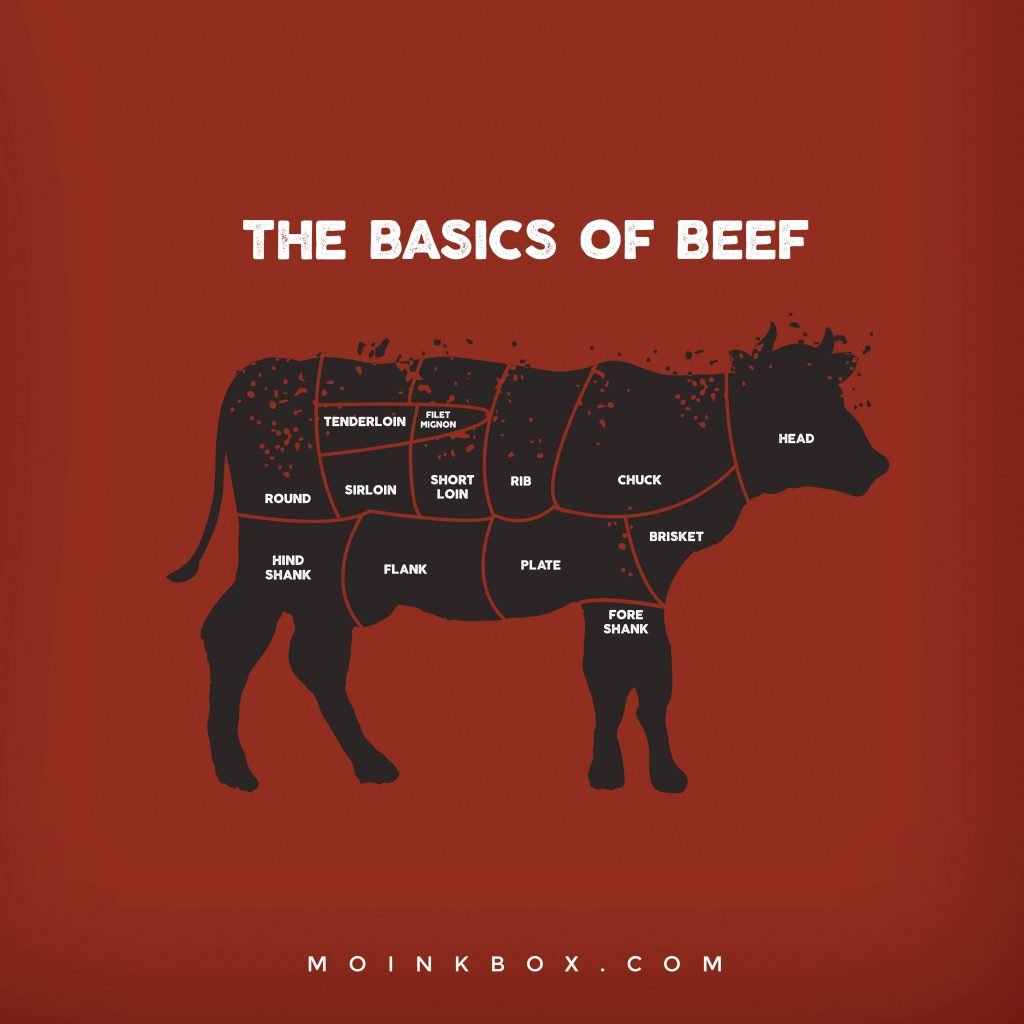
Before we get started, I have to remind you about the many benefits of our grass-fed beef. The cattle from Moink’s beef suppliers are humanely-raised and harvested on the pasture, and not the confinement building. They just live healthier, happier lives, and that makes tender-hearted carnivores like us feel all warm and fuzzy. We know good meat comes from healthy land. That’s why our network is made up of sustainable farmers who are good stewards of the environment, caring for the entire ecosystem so it can flourish in future generations. Grass-fed beef is also better for you. It contains less total fat, more heart-healthy Omega-3s, and more cancer-fighting antioxidants. Not to mention that Moink meat isn’t pumped with antibiotics, hormones and GMO grains.
Put all this together, and you’ve got the leanest, most tender and delicious tasting meat ever. Now let’s break it down.
French Ribeye Steak
Ribeye is cut from, you guessed it, the rib of the beef. With lots of delicious marbling and beneficial fat, French Ribeye is one of the richest, heartiest cuts available. It has a round chunk of meat encased in a thin layer of gristle just off the bone. There is also melt-away marbled fat throughout, but good preparation of high-quality Ribeye will melt the flat into the meat for the most amazing flavor. Many prefer to pan-sear this steak, because due to its rich fat content, grilling can be a little tricky. If you do grill it, be ready with some tongs in case you need to do a fire rescue mission! This steak really shines at a medium-rare doneness, around 135°F. But cook it however your heart desires, and then savor every single bite!
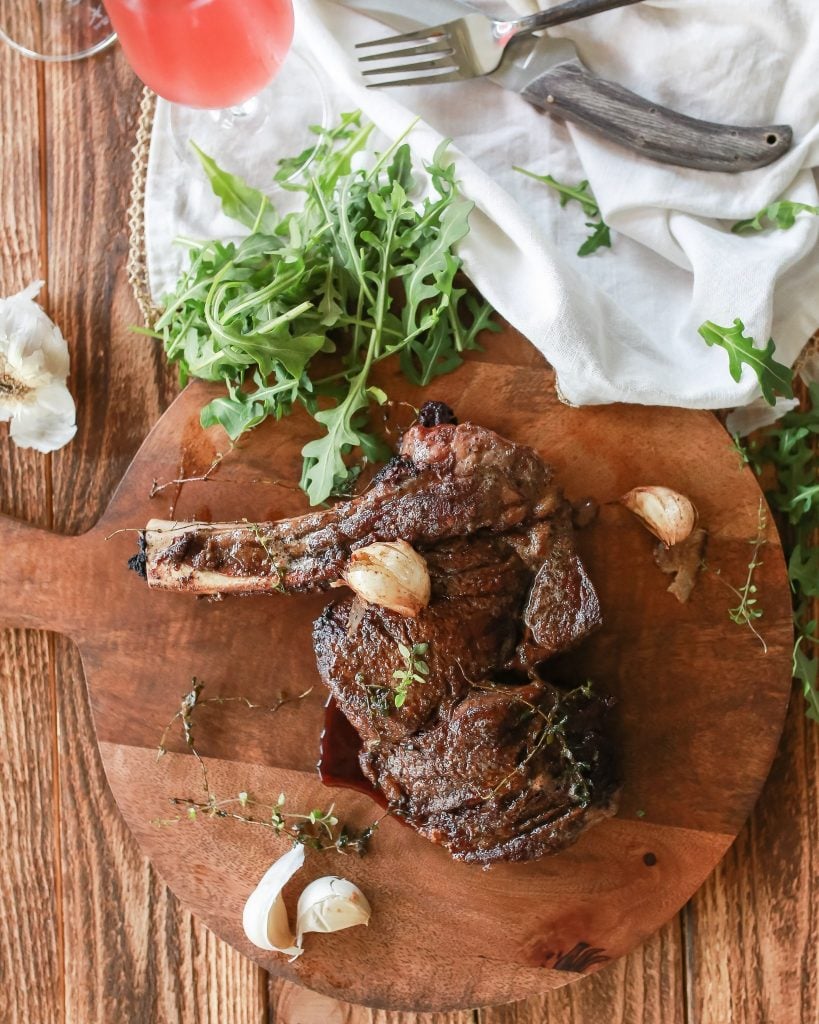
Petite Sirloin Steak
This cut comes from the smaller loin muscle of the beef, making it flavorful but a little less tender than other cuts. Its course texture is perfect for spice rubs and marinades, and it’s delicious either grilled or broiled. Pan-searing or oven-roasting Petite Sirloins isn’t optimal, as those cooking methods don’t allow enough heat to tenderize the meat. The key to preparing a perfect Petite Sirloin steak is to remove it from the heat BEFORE it’s done cooking so that the moisture at the surface can melt back into the meat to tenderize and flavor it. Let it rest while you drool over it for 3-5 minutes. Tasty things come to those who wait!
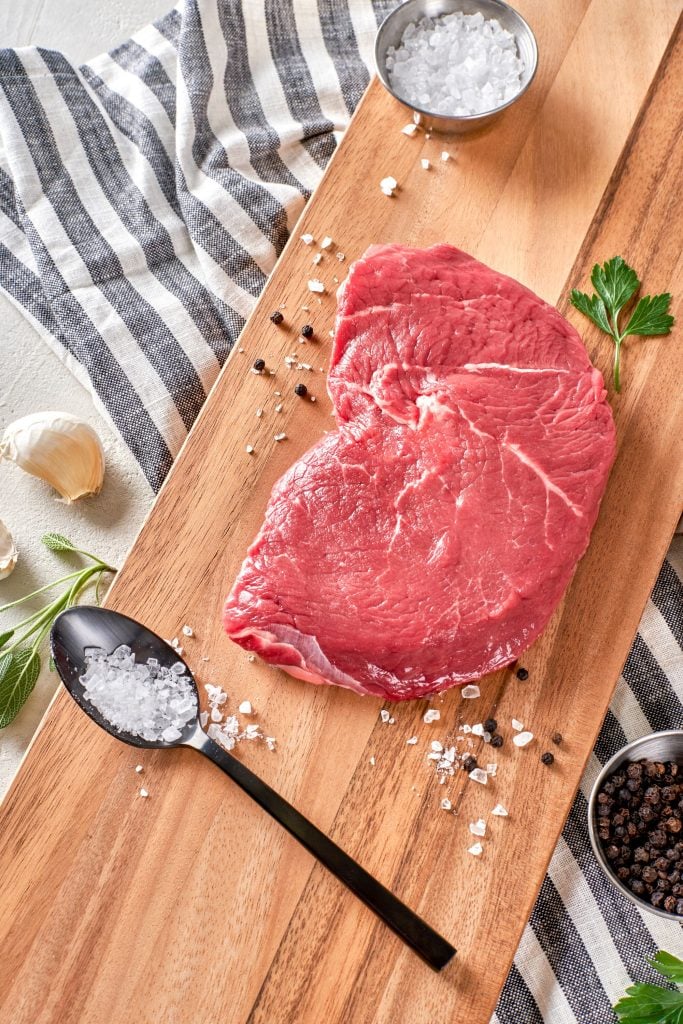
Filet Mignon
Ready for your French lesson? Filet Mignon is French for delicate filet, and it sure lives up to its name. As the “King of Steaks’ it’s one of the most premium and tender cuts from the small end of the tenderloin muscle, which is found on the back rib cage of the beef. This area is not weight-bearing, so the connective tissue is not toughened by exercise, and the result is melt-in-your-mouth meat. This cut is usually the biggest splurge on the steak house menu, so we say skip the markup and cook your own! When prepared correctly, a prime Filet Mignon can be cut with a fork. Whether you grill, broil, roast or pan-fry it, we recommend applying high heat first to sear the meat on both sides. Then lower the temp to finish it to your desired temperature. Just a tip, cutting into your Filet Mignon to check if it’s done let’s juicy goodness escape. To prevent this tragedy, use the touch method. Press the meat, and if it feels soft and leaves an imprint, it’s rare. If it’s mushy but slightly resistent, it’s medium-rare. The second it feels firm, it’s overdone. Party Foul!
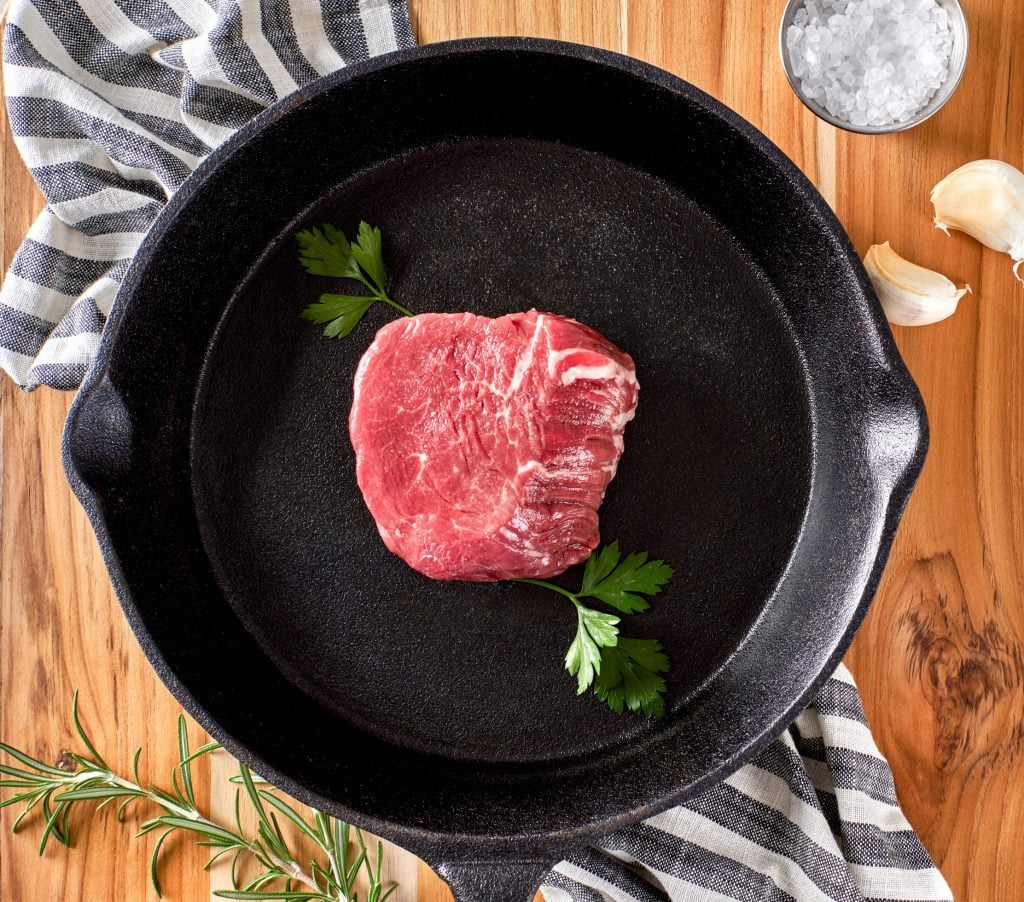
Coulotte Steak
As one of the most lean and narrow cuts from the cap of the top sirloin, boneless Coulotte steak is extremely versatile and packed full of bold, hearty flavor. It’s deep in color, soft and tender in texture and has superior marbling. That means it’s guaranteed to make the crowd go wild! Most agree this steak is best enjoyed when thoroughly marinated. Broil it, grill it or sauté it, because you can’t go wrong with melt-in-your-mouth, high-quality grass finished beef. As we like to say down South, it’s so go it will make your tongue slap your brain!
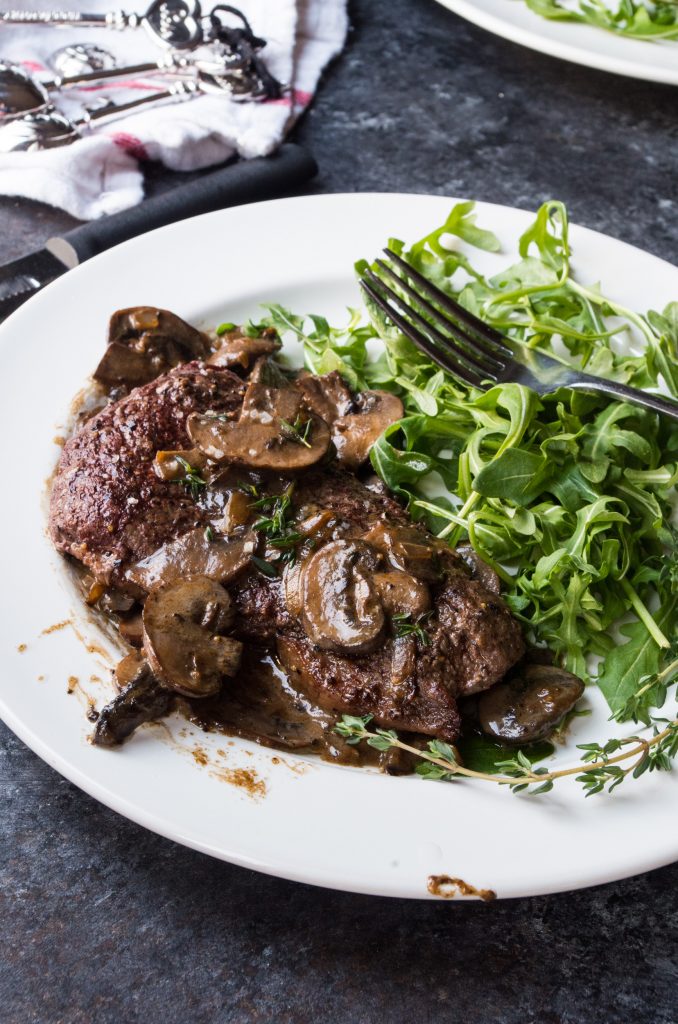
Flank Steak
Flank steak is cut from the abdominal muscles or lower chest of the beef. Like the Flat Iron, it’s lean and flavorful, and should be thinly sliced against the grain when carving (cut perpendicular to the long lines stretching down the cut). It’s texture best shines when it’s marinated or braised before being grilled or broiled to no more than medium doneness. If it’s Carne Asada or Philly Cheesesteaks you crave, this is the cut for you.
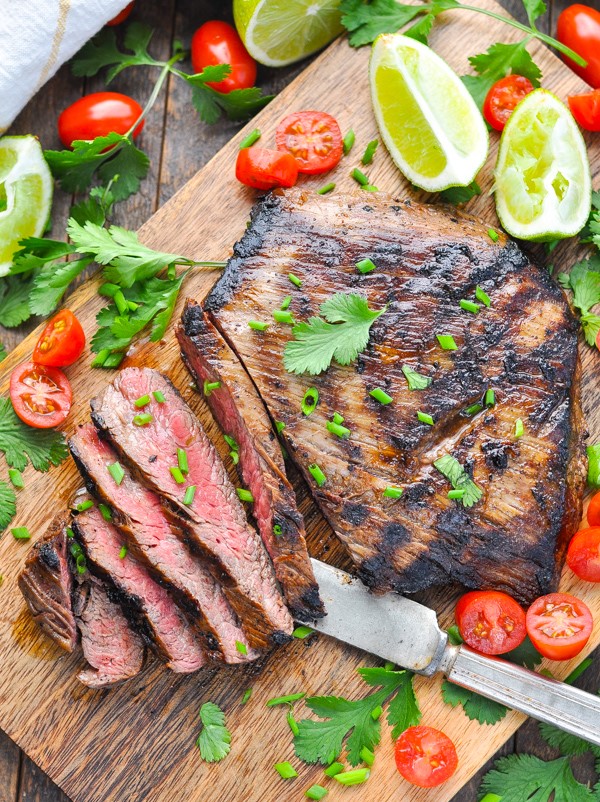
Beef Tenderloin Kabobs
With a fine, buttery texture, Tenderloin is the most tender cut of beef. But it can be a little tricky to trim, so we’ve done the hard work for you with our kabobs! To bring out the most flavor, cover the surface of the meat with a thin layer of sea salt, which will help bring out the beefiness of the Tenderloin, and don’t hold back on the dried herbs or crushed garlic. When it comes to cooking, less is more with this cut. It’s best served rare or medium-rare, so use a thermometer to make sure it doesn’t cook past 140°F in the center. Just like the Sirloin, it’s best to let this meat rest a few minutes so it can reabsorb all the juices for perfect tenderness.
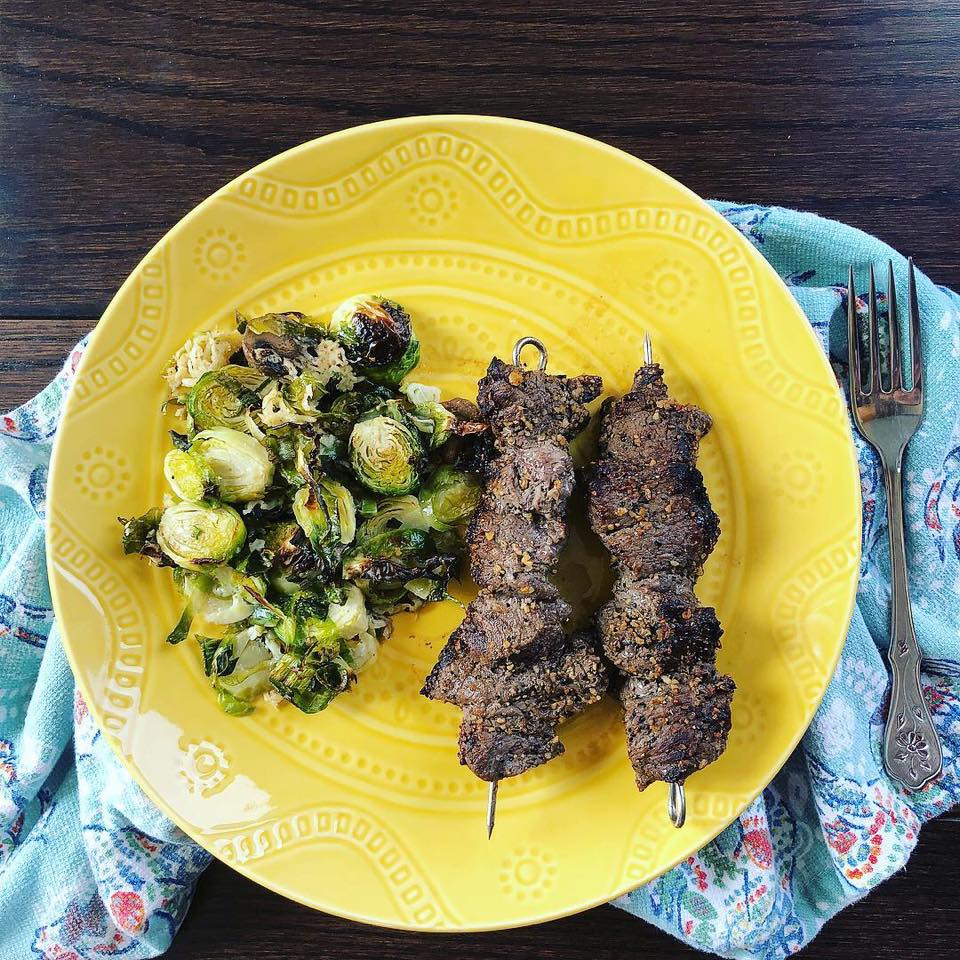
Ground Beef
Now that you’re a steak expert, let’s talk about some other beef options for your Moink Box. From Monday Meatloaf to Taco Tuesday, ground beef is a staple in most American households. It may not be as flashy as the Filet Mignon, but it’s the secret to Mama’s spaghetti and Dad’s world famous cheeseburgers! Ground beef comes from all parts of the beef. The grinding process combines both fatty and tough meat to tenderize it and improve flavor and moisture. Ground beef can be stored in the refrigerator for up to two days or frozen for up to six months. Whether you’re making spaghetti or chili, just a little bit of ground beef can be stretched with other ingredients if your family is looking to eat a little less meat or feed a small army. Always cook your ground beef thoroughly to 160°F.
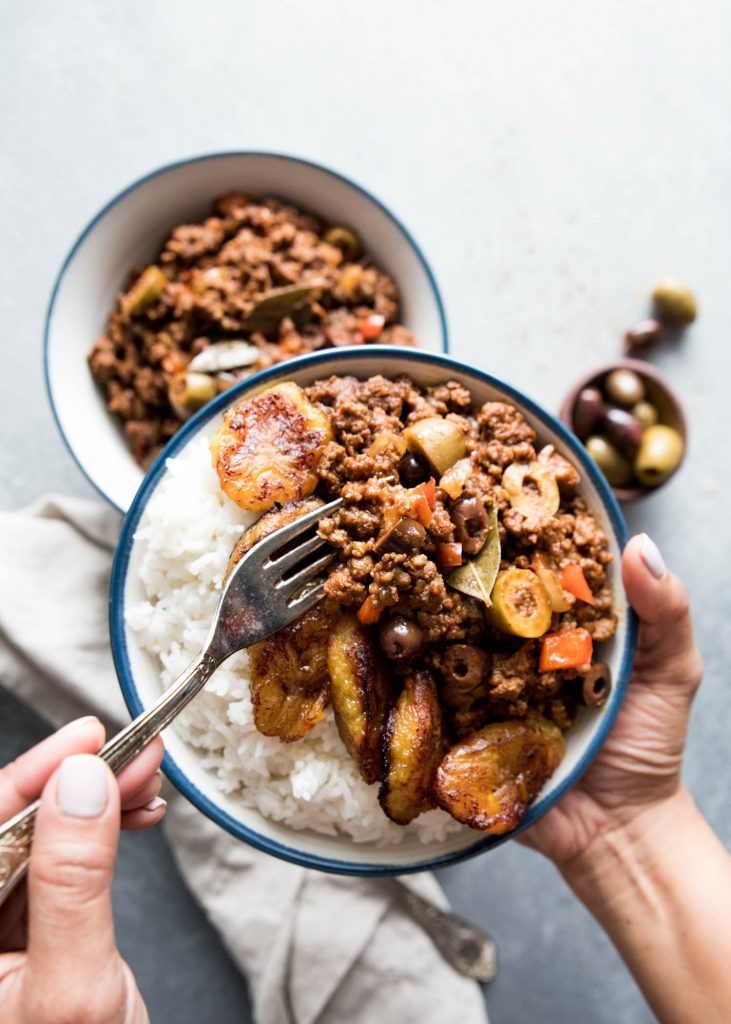
Chuck Roast
A Chuck Roast comes from the chuck, or the shoulder part of the beef. The most popular way to prepare a Chuck Roast is to make a pot roast, a method of slowly braising the meat with liquid until it’s juicy and tender. Pot roasts are simple to make in a single pot, whether you use a slow cooker, Dutch oven or instant pot, and they’re a great way to feed a large crowd. You can’t go wrong with a beef stew either! While wet heat is ideal, you can also slow roast this cut until fork tender, especially if it’s dry-rubbed with delicious spices ahead of time. There is a sweet spot for grass fed beef roasts. If you don’t cook them long enough they will be tough. Longer is better, but at a low temp. For fall-apart texture, cook your Chuck Roast to 180-200°F, then enjoy every bite of the ultimate comfort food!
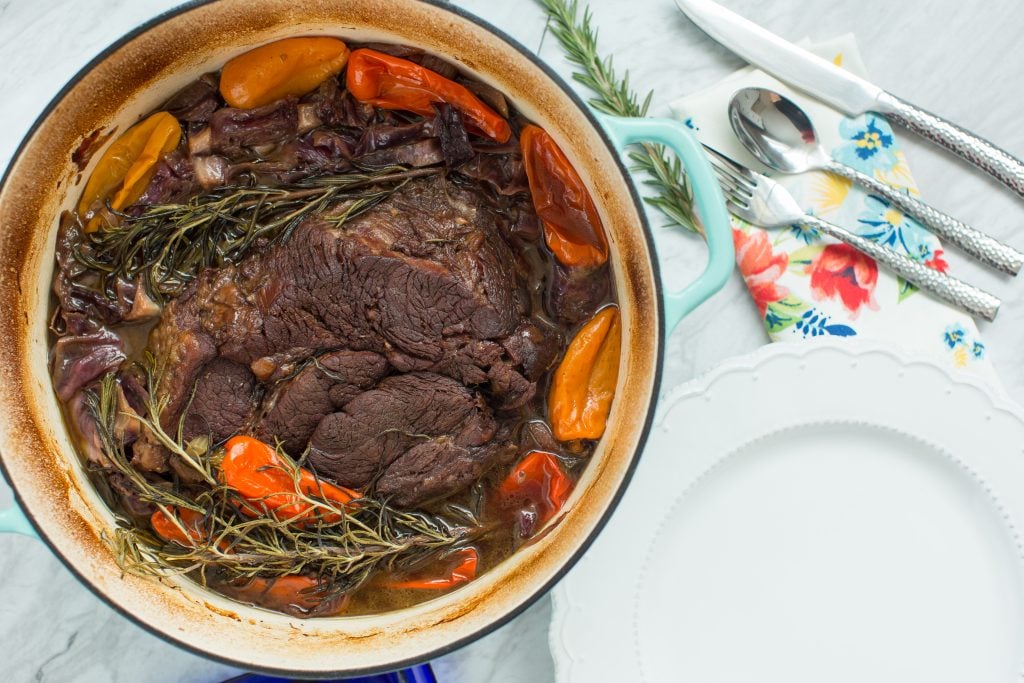
Bone-In Short Ribs
Short Ribs also come from the chuck portion of the beef. They are the five short ribs from the chuck section that are too small to be used for good steaks. Leaving the bones in adds additional flavor and helps stabilize the meat during cooking so it doesn’t fall apart, but they can be easily pulled from the short ribs after braising so you can serve them boneless. While Short Ribs can be grilled or smoked, they’re at their finest when cooked low and slow to peak tenderness. When braised, the high collagen content melts into the liquid, giving a silky texture and tremendous flavor. It takes patience, but your taste buds will thank you!
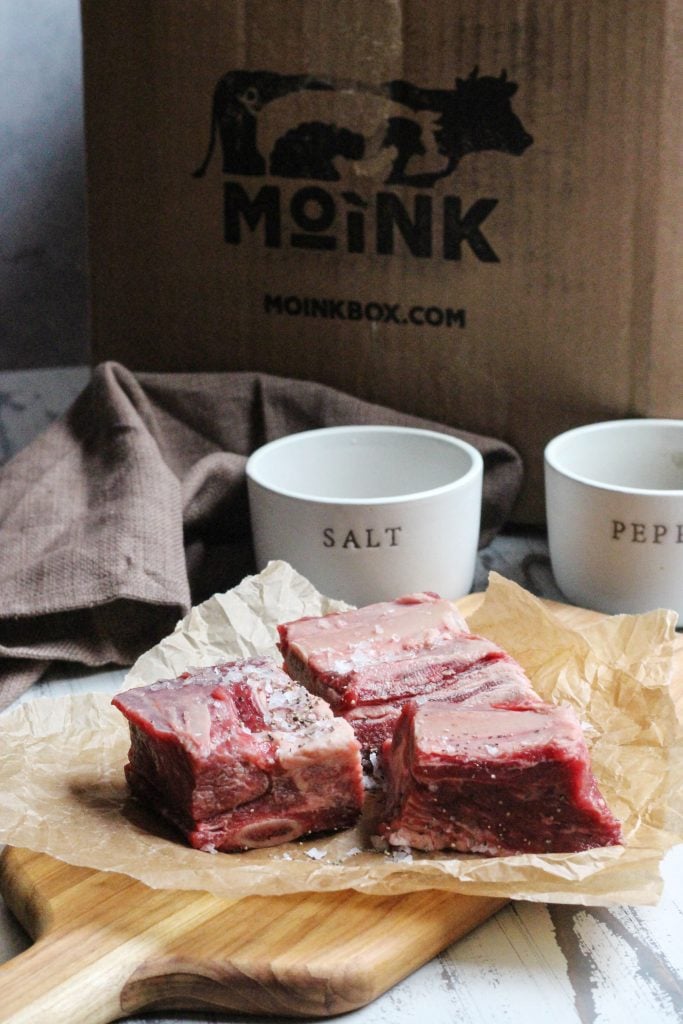
Standing Rib Roast
Throwing a party or hosting a large group dinner party? We’ve got you covered with our Standing Rib Roast, or as we like to call it, 6 lbs of grass-fed goodness! They’re perfect for feeding an army of guests, and your friends and family will be so impressed with your domestic skills! Plus, knowing you’re supporting family farmers working hard to take care of animals and our environment will make you feel even more festive! If you’ve never had Rib Roast, think tender Ribeye but not cut. And the taste? Let’s just say it will take all the restraint in the world not to lick your plate!
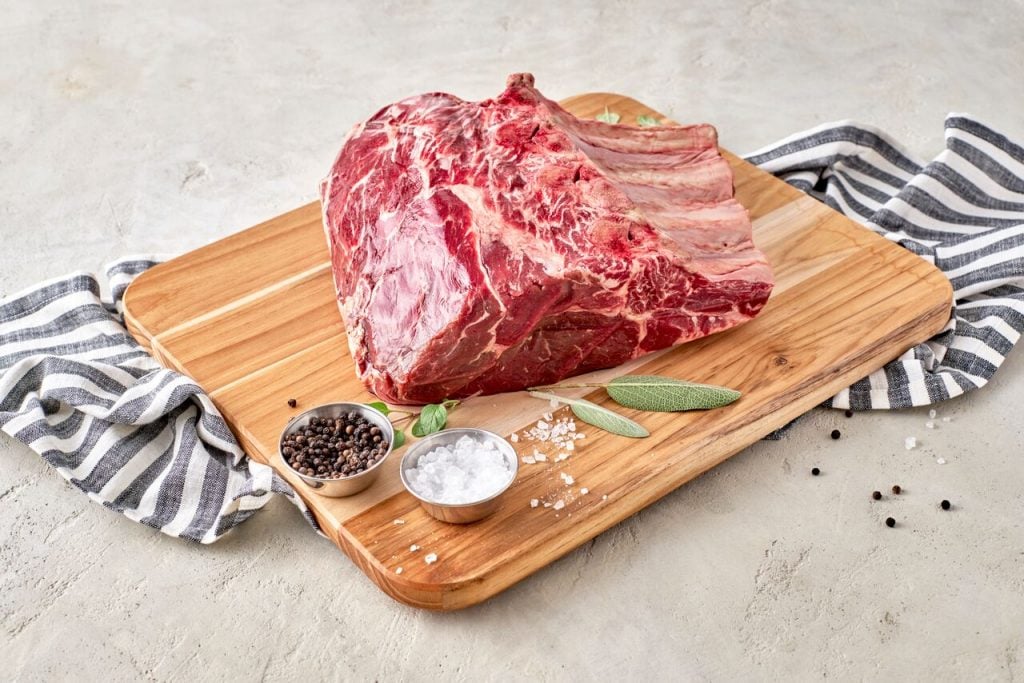
Brisket
Ready to up your tailgating game or make your family members swoon at the next holiday gathering? Add a Moink grass-fed brisket to your next Moink Box! Brisket is cut from the breast or lower chest of the cow, which supports about 60% of the animal’s body weight and making it full of connective tissue. Whether you use the smoker, the oven or the crock pot, low and slow is the name of the game if you want a tender and flavorful final product. That caramelized, fork-tender goodness can also take a little practice, so stick with it and keep honing your brisket cooking skills. Be sure to cook it to 160 degrees and cut it against the grain, but only after it has been able to sit about 20 minutes. The longer the brisket is in one piece, the longer it will soak up all the flavorful juices.
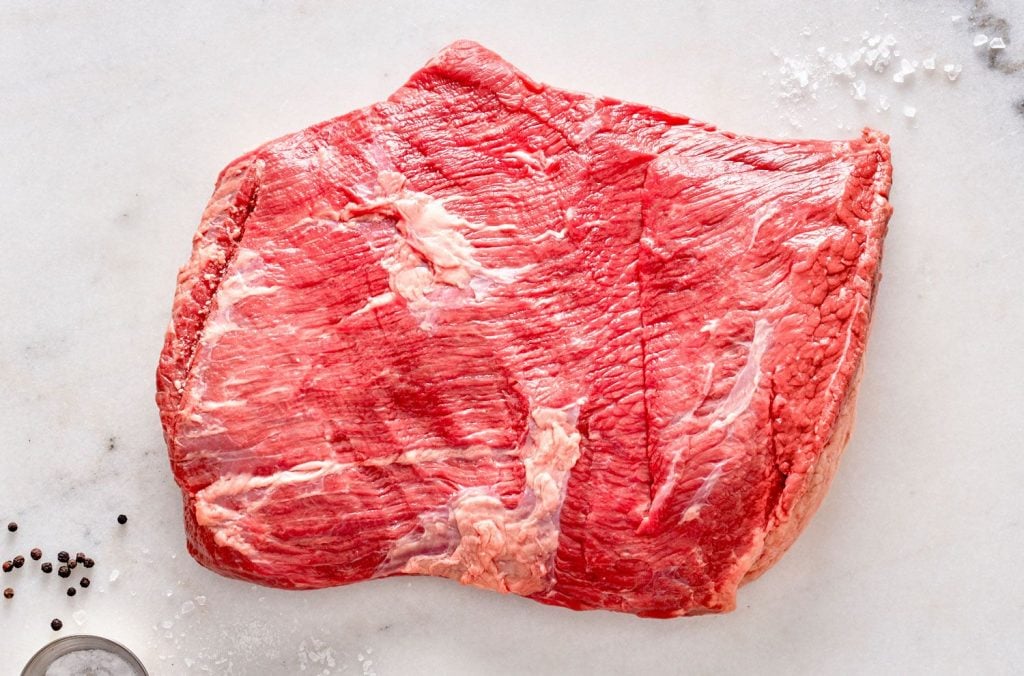
Beef Liver
Yes, by popular demand from our Paleo, Whole30 and AIP Moinkers, you can now get beef liver in your Moink Box! High in protein and rich in nutrients like Vitamin A, B12, Iron and heart-healthy COQ10, organ meats like liver are considered one of nature’s most powerful superfoods (Mooooooove over, kale!). Studies have shown it can help prevent anemia, support fertility, aid detoxification and more. Since the liver acts as the steer’s main organ of elimination, it’s very important to only eat the liver from pasture-raised, grass-fed cows who haven’t been given antibiotics, hormones and GMO feed. But the key to enjoying this delicacy is proper cook time, as overcooked liver has a tough and grainy texture. When cooked correctly, liver is moist and velvety. The trick is to cook it at a very high temperature for a short amount of time. We recommend stir-frying it in strips to best control the temperature and keep the inside a bit pink.
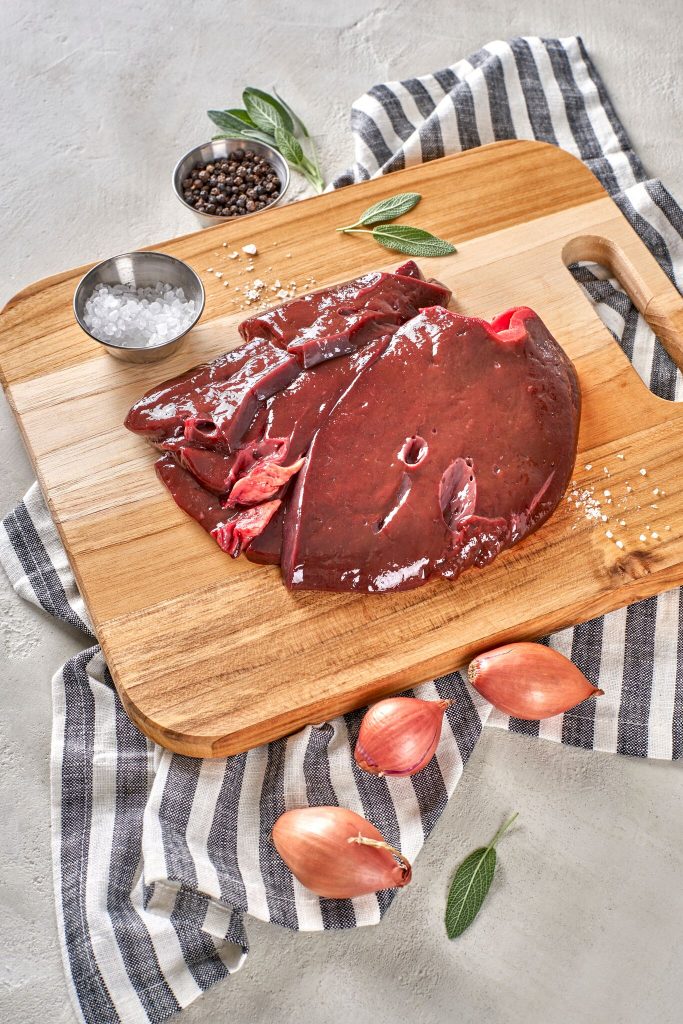
Beef Marrow Bones
Bone Marrow is another part of the beef that doesn’t get a lot of press, but has countless nutritional benefits, such as building immunity, repairing wounds, helping with digestion and even fighting diabetes, heart disease and cancer. The marrow is the mushy substance inside the bone, and it’s considered a delicacy in many cuisines. Once again, our customers asked, and we delivered, and you can now customize your Moink box with Beef Marrow Bones to make your own bone broth, soups, custards and even pastries! Some prefer to roast the bones and eat the marrow with nothing but salt. And if you want to spoil your pooch, Beef Marrow Bones would make him feel like he won the doggy lottery!
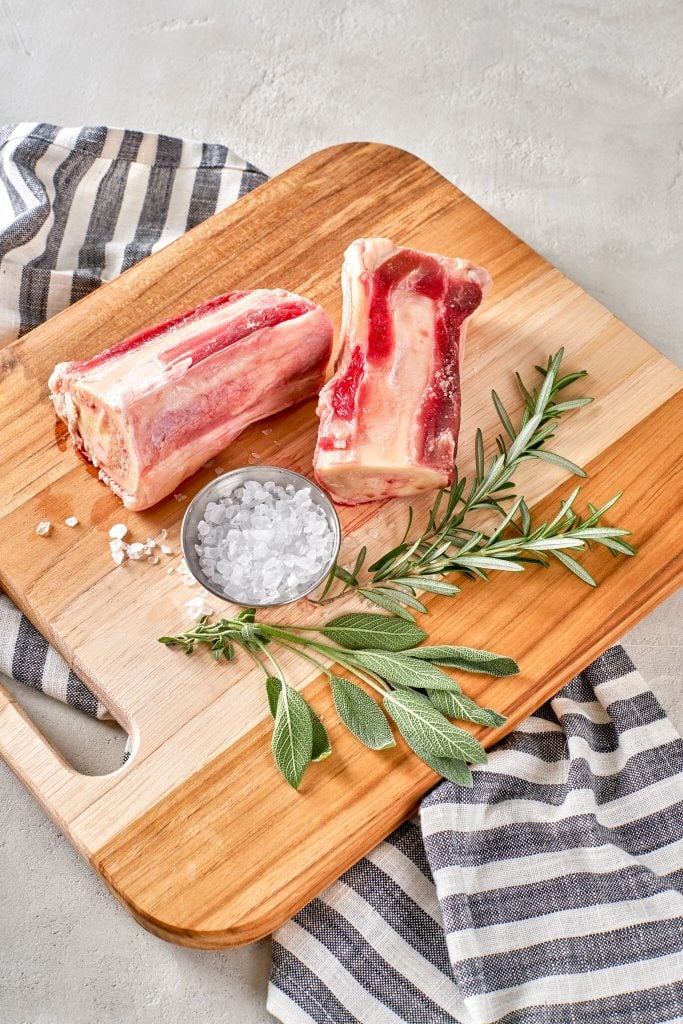
I know what you’re thinking. Even with all your new beef knowledge, it can still be hard to choose from all this grass-fed goodness. But luckily with Moink, you don’t have to! Each Moink Box contains 13-16 pounds of whatever cuts your heart desires, and you can switch it up with every delivery so you make sure to try them all!
Ready to put your new-found beef expertise into practice? Customize your Moink box today!
Ready to join the Moink Moovement and help us fight for the family farm?
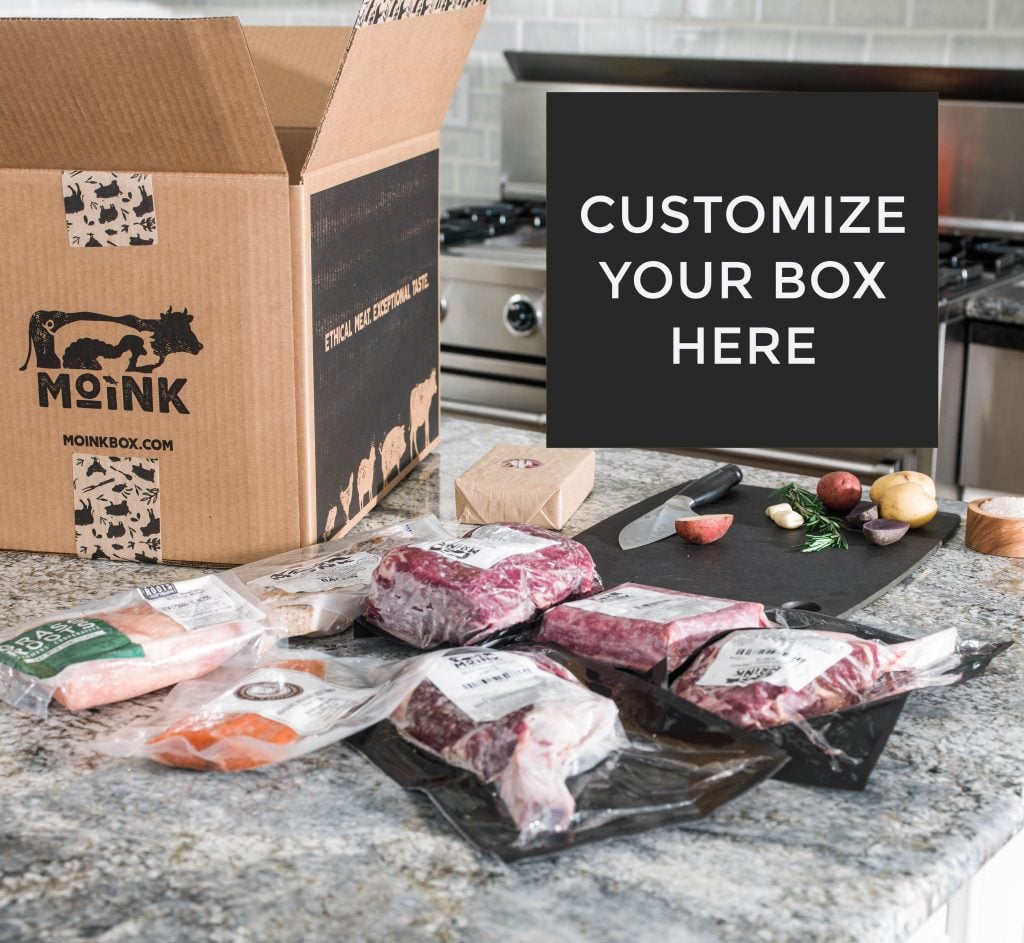
Can’t wait to try it
I tried this recipe and it turned out really good. What else can I add to the recipe? Thanks for the recipe.